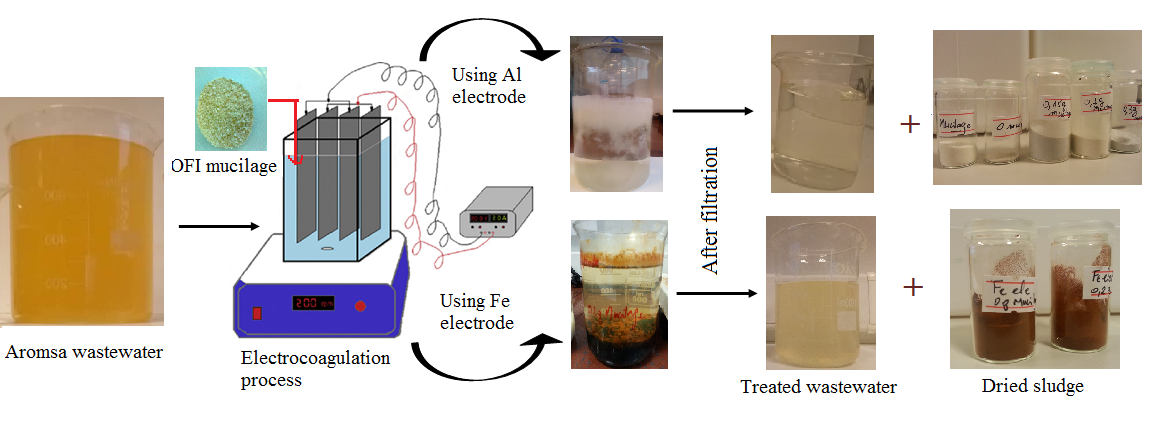Treatment of wastewaters from food Aromsa and ingredients production by electrocoagulation (EC) treatment aided by mucilage of Opuntia ficus-indica
DOI:
https://doi.org/10.56890/jpacd.v25i.518Palabras clave:
Electrocoagulation, food production wastewater, COD, Opuntia ficus indica, cladode, mucilageResumen
The electrocoagulation (EC) treatment process was aided by the cladode mucilage of Opuntia ficus-indica (OFI) to improve chemical oxygen demand (COD) removal efficiency (%) of wastewater from a plant producing flavoring and food additives. The studied variables included initial pH, current density, types of electrodes (Fe and Al), mucilage concentration, and charge loading. The EC treatment using Al electrodes, assisted by an optimum concentration of 200 mg L-1 OFI mucilage, a current density of 60 A/m2, and an initial pH equal to 3, improved the COD removal efficiency (69.77%) at an EC treatment time of 40 min. The EC operating costs, energy, and electrode consumptions values were equal to 3.809 US $/m3, 0.810 kWh/kg COD removed, and 0.7898 kg/m3, respectively. However, no improvement was noted when Fe electrodes were used with or without adding OFI mucilage (under conditions of pH 6, current density of 50 A/m2, and EC time of 120 min), and COD removal efficiency (%) was equal to 41.5%. The operational costs, energy and electrode consumptions were equal to 4.2201 US $/m3, 2.8 kWh/kg COD removal and 3.0964 kg/m3, respectively. The OFI mucilage could be used as a promising bio-coagulant with EC treatment using Al electrodes, to treat the plant producing flavoring and food additives wastewater.
##plugins.generic.pfl.publicationFactsTitle##
##plugins.generic.pfl.reviewerProfiles## N/D
##plugins.generic.pfl.authorStatements##
Indexado: {$indexList}
-
##plugins.generic.pfl.indexedList##
- ##plugins.generic.pfl.academicSociety##
- Journal of the Professional Association for Cactus Development
- Editora:
- Professional Association for Cactus Development




